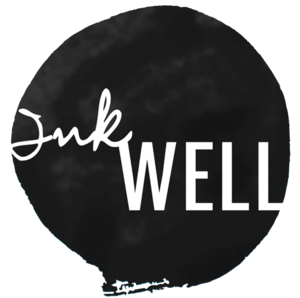This week, we discussed writing a poem ‘after’ another poet — these poems can also be called response poems. They are often written ‘in homage to’ or ‘inspired by’ another poem. They can take a wide variety of forms.
We considered the following definitions of ‘after’ poems as well as the controversies they can bring about when it comes to plagiarism to guide us through the session.
1) “When you write a poem heavily influenced by another poem you always acknowledge it with the word ‘after’ and the original poet’s name. Poets are often inspired by stories: legends, fairy tales, religious narratives, myth and other poems.”
(https://poetrysociety.org.uk/competitions/foyle-young-poets-of-the-year-award/foyle-lesson-plans/once-upon-a-poem/)
2) “When writing a poem after another writer’s work, create something that reacts to their work or emulates (but doesn’t copy) their style. You’re aiming to create something that can continue a conversation about their work.”
(https://www.writersdigest.com/write-better-fiction/how-to-draw-influence-from-other-writers-without-plagiarizing-6-tips-to-avoid-an-ailey-otoole-situation#:~:text=When%20writing%20a%20poem%20after,feel%20honored%20rather%20than%20cheated.)
3) “Cortese isn’t the only small-press poet wondering out loud or online whether ‘after’ poems — which can connote anything from ‘in homage to’ or ‘in conversation with’ to ‘in the style of’ or ‘inspired by’ — are sometimes used as cover for laziness or even outright theft… There’s nothing straightforward about the debate, and nothing particularly new about the ‘after’ convention. Poetry is a medium in which sampling, allusion, and conversation have always been part of the game… The best solution might be for poets to assume ignorance before malice, and to ask questions before making accusations. But it also behooves writers intent on entering into dialogue with other poets on the page to start by doing so IRL — to practice an aesthetic version of affirmative consent. ‘You might want to find out,’ says Orr, ‘whether they want that conversation to take place, whether they’re open to it — because they don’t have to be.’”
(https://www.vulture.com/2018/12/poetry-twitter-debates-whether-after-poems-are-plagiarism.html)
The poem we read this week was an excerpt from Dionne Brand’s thirsty, published in 2002. Read the excerpt here and listen to the poet reading the excerpt here before moving on to the writing exercises.
Here’s a snippet of the poem to spark your curiosity:
This city is beauty
unbreakable and amorous as eyelids,
in the streets, pressed with fierce departures,
submerged landings,
I am innocent as thresholds
and smashed night birds, lovesick,
as empty elevators
let me declare doorways,
corners, pursuit, let me say
standing here in eyelashes, in
invisible breasts, in the shrinking lake
in the tiny shops of untrue recollections,
the brittle, gnawed life we live,
I am held, and held
Copyright © Dionne Brand, 2002. From poetryinvoice.com.
Writing Exercise #1:
Write a poem after Dionne Brand’s excerpt from thirsty. Use the line “This city is…” to begin your poem. Choose one more line from the poem and use it somewhere else in your poem (at the beginning, the end, hidden in one of the stanzas, anywhere you’d like).
Writing Exercise #2:
Write a different poem after Dionne Brand’s excerpt from thirsty. Use the line “would I have had a different life” as a prompt to begin your poem.
There were some beautiful poems shared in the workshop. Whether or not you were present for the live session, share your poems in the comments below!

